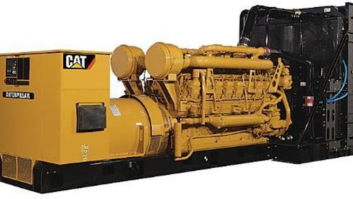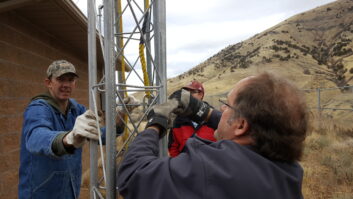New Hampshire Public Radio’s Steve Donnell writes that it’s a great idea to have some kind of automatic bypass for UPS AC power that operates critical equipment. At NHPR, Steve has been using these for many years, and has found them particularly handy when replacing the batteries in a UPS.
There was a company by the name of Pulluzi, which produced pretty much the same thing described in the June 23 Workbench column. Unfortunately, they are no longer available.
However, Tripp Lite makes a “smart” bypass controller. In addition to providing primary/secondary source selection, you can also connect to it via a web GUI. The GUI lets you switch individual outlets ON/OFF, much like a Burk AC8.
One key element that should be taken into consideration when using any automatic UPS bypass relay is, if at all possible, to be sure that you use a separate AC outlet. This would be a breaker fed from a separate circuit breaker as the source for the secondary (non-UPS) power.
As rare as it is, Steve has seen more than one instance where a fault in a UPS causes the circuit breaker that feeds the UPS to trip. The result will be the loss of secondary AC power as well.
***
From Pahrump, Nev., John Higdon agrees that in many circumstances the use of a UPS bypass relay can be valuable. However, over the past 40 or 50 years, some stark power situations have been found to thwart this solution.
First, using a relay to switch AC power to computers or microprocessor-controlled electronic gear of just about any variety is enough to hang up operation or cause a reset (and reboot) of the device. John once tried to use a standby/switchover type of UPS on a BE FXi250 exciter, and every time the UPS was called to action, the exciter crashed, got its operation corrupted, or developed some other problem that could only be corrected with a power recycle. John took the UPS out in favor of a homemade standby power protection system, which provided no glitches and no problems.
Second, the behavior of APC standby UPSes is exactly as the article states and is why John has been phasing out those units (which result in more down time than up time when they are deployed). His replacement? An online UPS.
Yes, online units can be victims of dead or weak batteries; but due to their design, have the ability to frequently and thoroughly test all the batteries for load-handling capability. The result is notification of problems found, well before problems occur.
Even at home, John uses his own 48 VDC-based online non-interruptible server room power. John does like the high-end APC Symmetra, which is a very good small online UPS (12 KVA). The bottom line: The solution contained in the Workbench column is handy for a limited number of applications; but the real fix is to use a decent UPS, or fashion one of your own. It isn’t rocket science! Just be sure to test it.
John states that most people don’t have a handle on why UPSes have trouble with generator power. It isn’t frequency or even voltage in the usual sense. The real problem is that at the moment a stand-by UPS switches the load back to main’s power (which the generator is actually supplying), there is an instantaneous voltage drop of around 10–15 volts from the generator, for which the generator’s voltage regulator compensates within a second or less. By then, the UPS has already interpreted that drop as “loss of mains power” and switches back to its own battery.
When the UPS sees proper voltage on the mains side (generator), it tries to switch back again. The voltage dip occurs again, and this process repeats until the batteries in the UPS are exhausted. The fix (and APCs have this capability) is to get into the UPS set up (or use the DIP switches, depending on the unit) and desensitize the voltage monitor in the UPS. This slows down its response time, so it ignores the voltage dip and stays with the generator power.
***

Fig. 1: A burned disconnect, caused by loose wire lug connections
Speaking of power, Fig. 1 shows what happens when you don’t keep your AC lugs tight inside circuit disconnect boxes. The picture was sent in by William Bowin, chief engineer for North American Broadcasting, based in Columbus, Ohio.
The photo shows a 200 amp three-phase fused disconnect for one of the main transmitter sites that Bill maintains. The station had to switch to its backup site, awaiting a visit from an electrician. Bill notes that even though the disconnect is in the OFF position, power is not actually shut off because the mechanism is melted/welded.
Checking lug tightness is something that should be done every year or two on all your disconnects. Unfortunately, this example is on the “line” side, so checking the lugs cannot be easily accomplished without pulling the electric meter. Almost no one does that routinely, but the result may cause you to re-think that maintenance procedure.
Contribute to Workbench. You’ll help fellow engineers and qualify for SBE recertification credit. Send tips to [email protected].
Author John Bisset has spent 46 years in the broadcasting industry and is still learning. He handles West Coast sales for the Telos Alliance. He is SBE Certified and is a past recipient of the SBE’s Educator of the Year Award.







